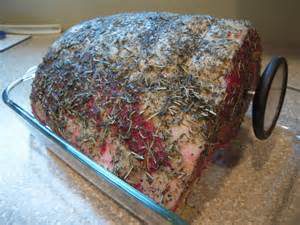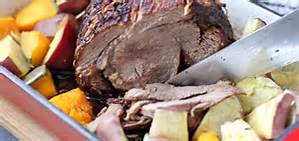Helpful Tips and Hints
On this page I will share some ideas on grilling, marinading, seasoning and cooking techniques that I’ve found useful during my time in the meat industry….
How To Avoid Burning Marinated Meats…
When using some marinades, sauces or seasoning’s that have sugar in them, be careful not to let the flames from the grill come in contact with your marinated meat. The sugars can burn and can blacken the meat. Even in a frying pan if it is too hot the same thing can happen. Easy solution is either raise the grill and turn the meat more often when cooking. A little but simple hint…
Searing Meat Helps Build Flavour…
Searing meat gives a great caramel, deep brown colour on the surface of the meat. This hints is easy to follow.
Use a little oil and add to a frying pan. A few teaspoons but more if you have quite a few pieces. Make sure the pan is  hot. With the pan over high heat, pat the meat dry using paper towels. When the oil starts to smoke lightly and sizzle, you’re ready to add the meat. Don’t crowd the pan and leave some spacing between the meat pieces. This will avoid the meat from steaming and stewing and give each meat piece an even searing.
hot. With the pan over high heat, pat the meat dry using paper towels. When the oil starts to smoke lightly and sizzle, you’re ready to add the meat. Don’t crowd the pan and leave some spacing between the meat pieces. This will avoid the meat from steaming and stewing and give each meat piece an even searing.
When the meat is in the pan, try not to disturb and move around too much. The meat needs a few minutes of uninterrupted contact time to properly sear and seal. It will stick to the pan but then naturally release when seared. When this happens it is time to turn over and repeat the process.
Once the meats are seared, set aside and you’re ready to continue with the next part of your recipe. The flavour will be wonderful.
Intensify Flavours and Keep Your Meat Juicy Tip…
To keep your meat nice and juicy, try grilling or pan frying your meats for a while and then finish them off in the oven. The grilling and frying seals and sears the outside, locking in all the juices and the flavors intensify while in the oven. Works great with crumbed, stuffed chicken breasts as you get that crispy outside crunch with a moist, juicy, plump, tender, delicious item.
Temperature Cooking Chart Conversion Table…
This is an approximate conversion cooking chart between electric and gas. Please bear in mind temperature will vary between different brands, sizes of ovens, in addition to your locations altitude, location temperatures and humidity.
|
90°C |
194°F | Gas Mark 1/4 |
Very Cool / Very Slow |
|
100°C |
212°F |
Gas Mark 1/4 |
|
|
120°C |
248°F | Gas Mark 1/2 |
Cool / Very Slow |
|
160°C |
320°F | Gas Mark 3 1/4 |
Medium to Very Moderate |
|
180°C |
356°F | Gas Mark 4 |
Moderate |
|
200°C |
392°F | Gas Mark 6 |
Moderately Hot |
|
220°C |
428°F | Gas Mark 7 |
Hot |
| 250°C | 482°F | Gas Mark 9 |
Very Hot |
I use Celsius when I cook. Most advice I give to customers when roasting is use a moderate oven. 180 degrees C is moderate and the general rule of thumb I use was passed down to me by one of my teachers and old time butcher. But he used cooking time by pounds in those days.
OK the rule was:
At 180 degrees, 20 minutes per pound, plus 20 minutes extra at the end of cooking weight. That means if a roast is 2.2lbs (1kg) the cooking time would be 44 minutes for the weight of the roast plus 20 minutes to finish off. Total time 64 minutes.
64 minutes.
So I’ve worked out the calculation for 1 kg of meat, at 180 degrees, I cook for about an hour. I check my roast after 1 hour by sticking a skewer into the thickest part of the roast and then remove the skewer to see what colour the fluid is that oozes out. If the fluid that comes out is blood red, then the roast is not cooked yet so another 10 – 15 minutes. If the fluid comes out pinkish then the roast is cooked to my liking. Medium Rare on the inside. Perfect. If the fluid comes out clear then the roast is well and truly cooked and maybe over done but this might be how you like it.
Remember that all meats will continue to cook even after removed from the heat source. That’s why you should let the meat stand or set aside before serving as it just makes it taste better and give, what we say in the industry, “a nice mouth feel”.

I’ve learnt that “Low and Slow’ is really the best way to cook roasts. The lower the temperature the more tender the roast will turn out. Of course that means more cooking time and if you were to cook a nice piece of beef brisket that is 1.5 or 2 kg at 100 degrees C then you would be looking at 2 hour per kg so about 4 hours or even a bit longer. The meat will just fall apart and that’s what we call “pulled beef brisket”. Works just as well with a pork shoulder. Boneless or bone in. Try it yourself and lets us know the result.
Freezing Ground Meat…
Before freezing ground meat, place the mince into a new plastic bag or on a plastic meat tray and flatten it into a square, rather than leaving it in a mound. It will freezer faster as it is now thinner and thaw faster when you need it for your next meal. Pack easier in your freezer as well.
Marinating Meat…
Before you freeze your meat try marinating the meat in a liquid marinade for 30 minutes. The meat will stop marinating when frozen but will start again as soon as thawing has begins.
Marinating meat overnight will help reduce cooking time, believe it not.
Roasting Hints…
Stop roast meat or poultry from sticking to the pan by placing it on a row of celery stalks, carrot sticks and a few branches of fresh rosemary that have been tossed with a little olive oil. Roast as usual. You wont need a roasting rack.
When cooking a beef roast and you don’t want to make gravy with the juices, don’t throw the juices out, save the pan juices and freeze it in ice cube trays. Wrap the solid cubes in foil and store in the freezer for instant beef stock for soup or stew. Great flavour added to another dish with little work or fuss.
A roast will stay hot for an hour or more if you wrap it in doubled aluminium foil, then several sheets of newspaper.
Allowing a roast to stand for 10 to 15 minutes before removing it from the oven will allow slicing easier.
A shallow pan is better for roasting meats because if allows heat to circulate around the roast.
To prevent meat from scorching when roasting, place a pan of cold water in the oven.
Steaks Hints…
To keep them flat when cooking, cut several nicks in the fat all around the piece of meat with kitchen scissors to prevent it from curling.
Tenderising Meat Through Cooking With Fruit…
If you want to cook a tough piece of meat, select a recipe that has fruit in it — pineapple, papayas, crab apples, bananas, figs or kiwi – all of which contain tenderizing enzymes. Moist cooking, such as crock pot and roasting in a slow oven while sealed in foil, is preferable to dry cooking.
Thanks for the tips John, I’ve had a few issues with burning my marinated steaks on the BBQ at times. I will try out your hint next time I’m on cooking duty.
Max
No problem Max, glad to hear you have found the solution to try. All the best and let me know your success.
John
I will definitely try your marinades John. They sound delicious.
Hi Jan, thanks for dropping by. Please enjoy and let me know how you go.
John